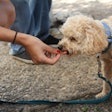Globally, pet food manufacturer associations are a good source of regulatory information. The following details the regulation of pet food in the US.
FDA and AAFCO
The authority to regulate pet food is vested in federal and state law. The federal agency responsible for animal feed regulation is the US Food and Drug Administration (FDA), which regulates animal feed, including pet food, under the Federal Food, Drug and Cosmetic act and Federal Code, Title 21. Each state has a program responsible for regulating livestock feed and pet food, under the laws and rules of their specific jurisdiction, usually associated with the State Departments of Agriculture.
A third entity, known as the Association of American Feed Control Officials (AAFCO), is important to an understanding of how the feed regulatory system works. AAFCO itself has no regulatory authority, although its members are FDA representatives and state feed control officials.
AAFCO has established a uniform code, known as the Model Bill. This bill serves as the standard on which states base their feed laws and regulations to maintain a substantial degree of uniformity throughout the US. AAFCO also has established uniform definitions of numerous feed ingredients to provide a common understanding of what is used in animal feeds.
While the roles of the FDA and the state feed control programs overlap, there are differences. Federal authority is primarily concerned with interstate feed distribution and state authority is involved with products distributed within their jurisdiction. There is a tremendous amount of cooperative activity between the FDA and states through information exchange, cooperative agreements, contracts and grants. The state feed control officials do perform the major portion of the regulation of feed and pet food products within their jurisdictions.
Federal and state requirements
State and federal law and regulations enumerate many requirements for pet food, including the requirements that the products be unadulterated and correctly labeled. Specific activities which both systems engage in include:
AAFCO has been pressing for and has drafted model language designed to enhance the process control requirements and inspections for non-medicated feed, which includes specific process control points for plants that manufacture pet food and specialty pet foods. Says David Syverson, chair of the AAFCO Pet food Committee, "it is AAFCO's hope that pet food industry embraces this very necessary enhancement to feed safety."


.png?auto=format%2Ccompress&fit=crop&h=167&q=70&w=250)
.png?auto=format%2Ccompress&fit=crop&h=167&q=70&w=250)












